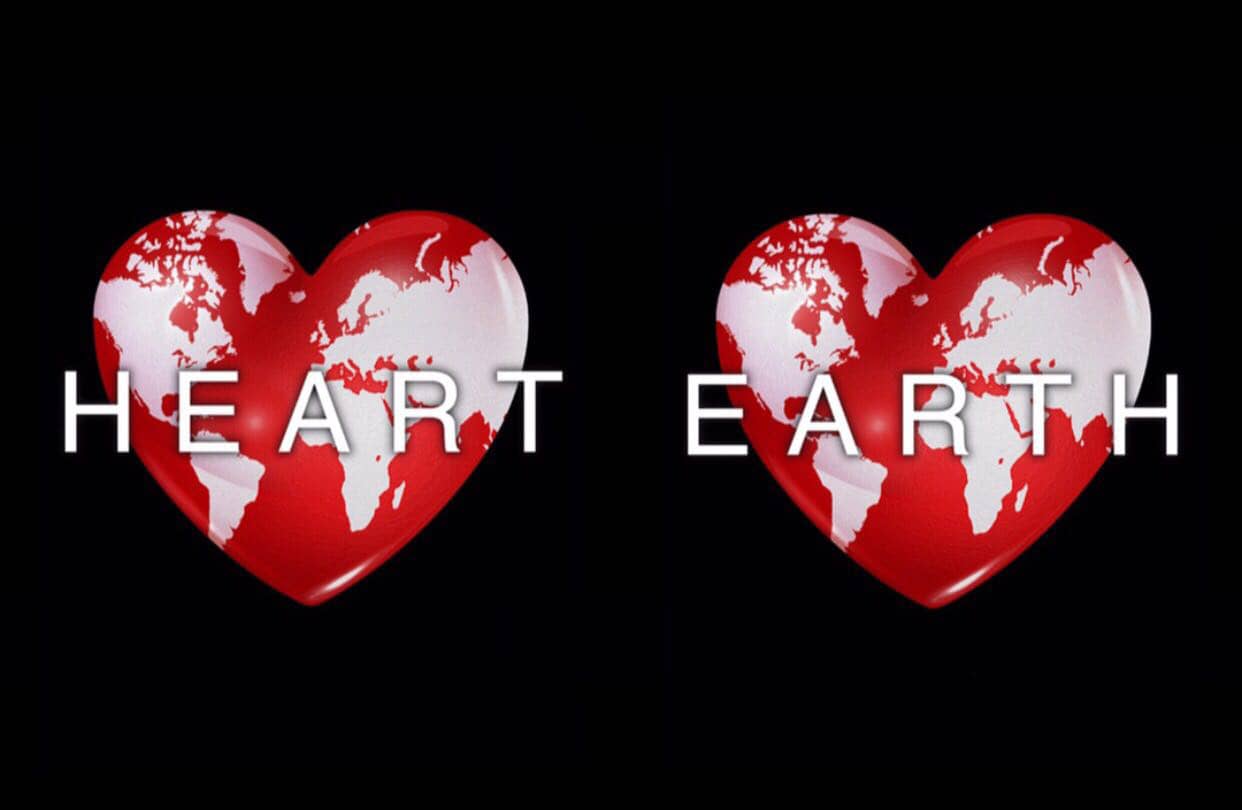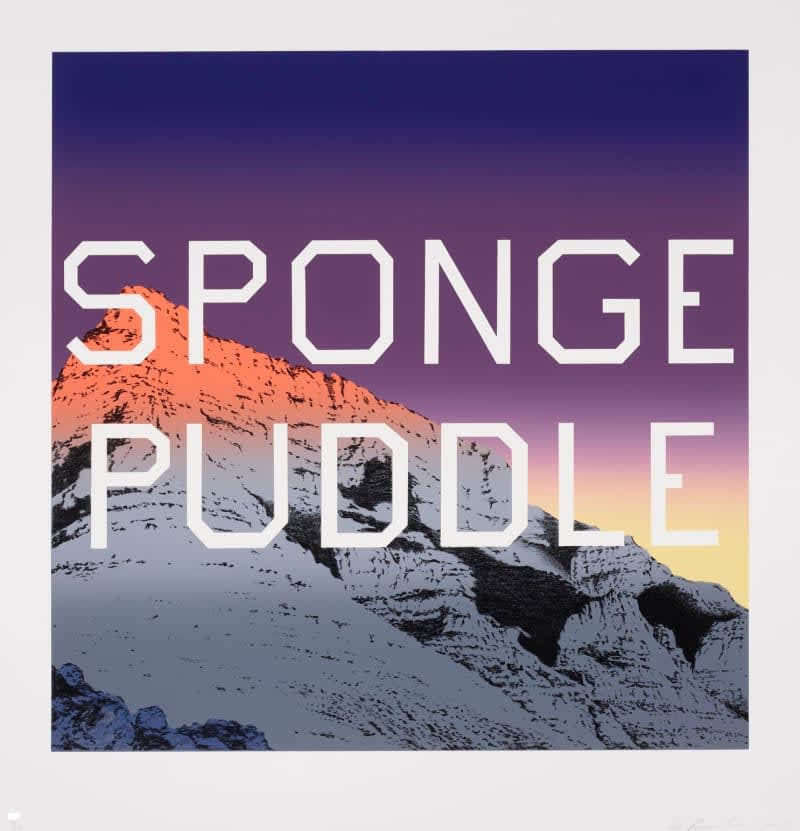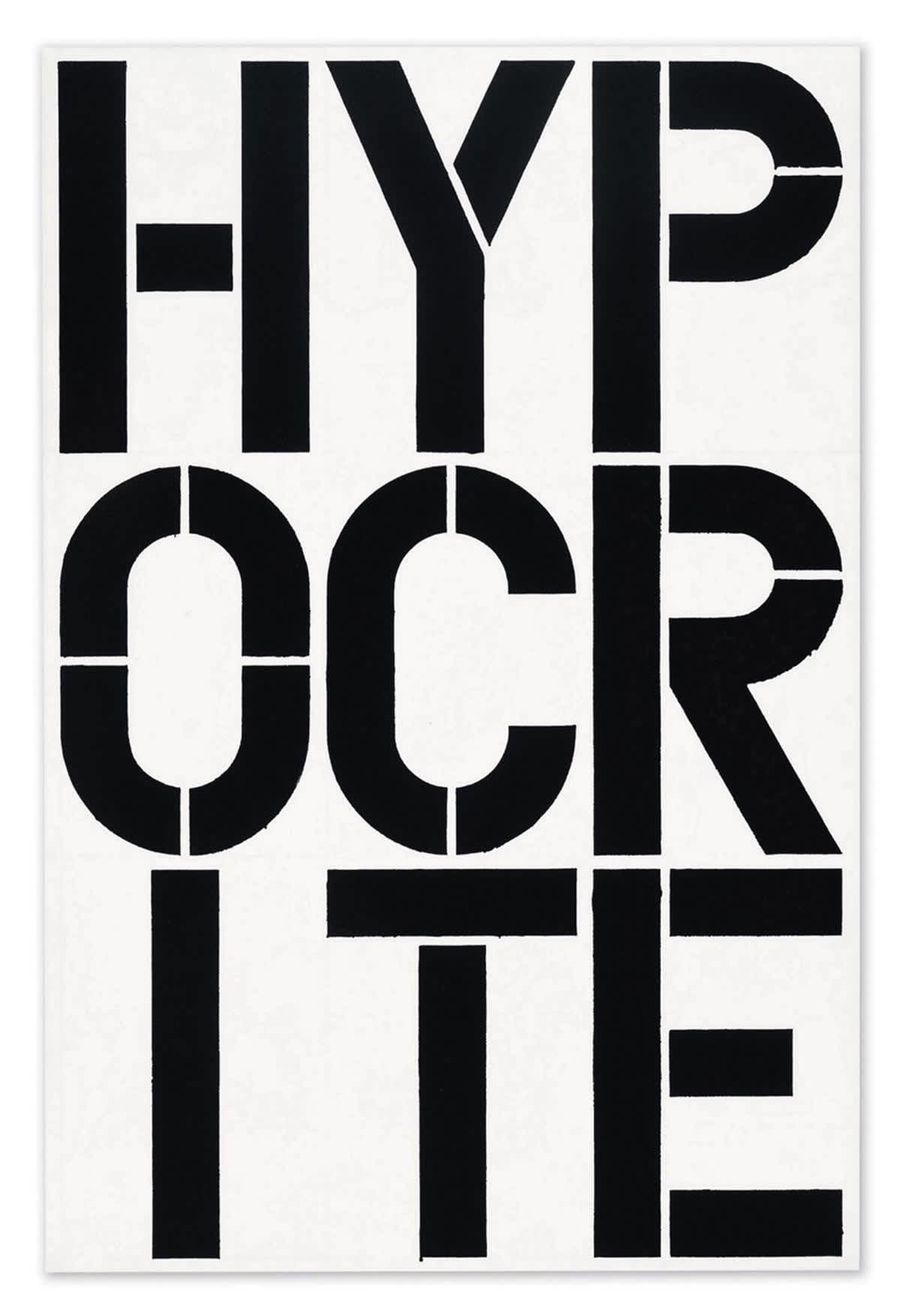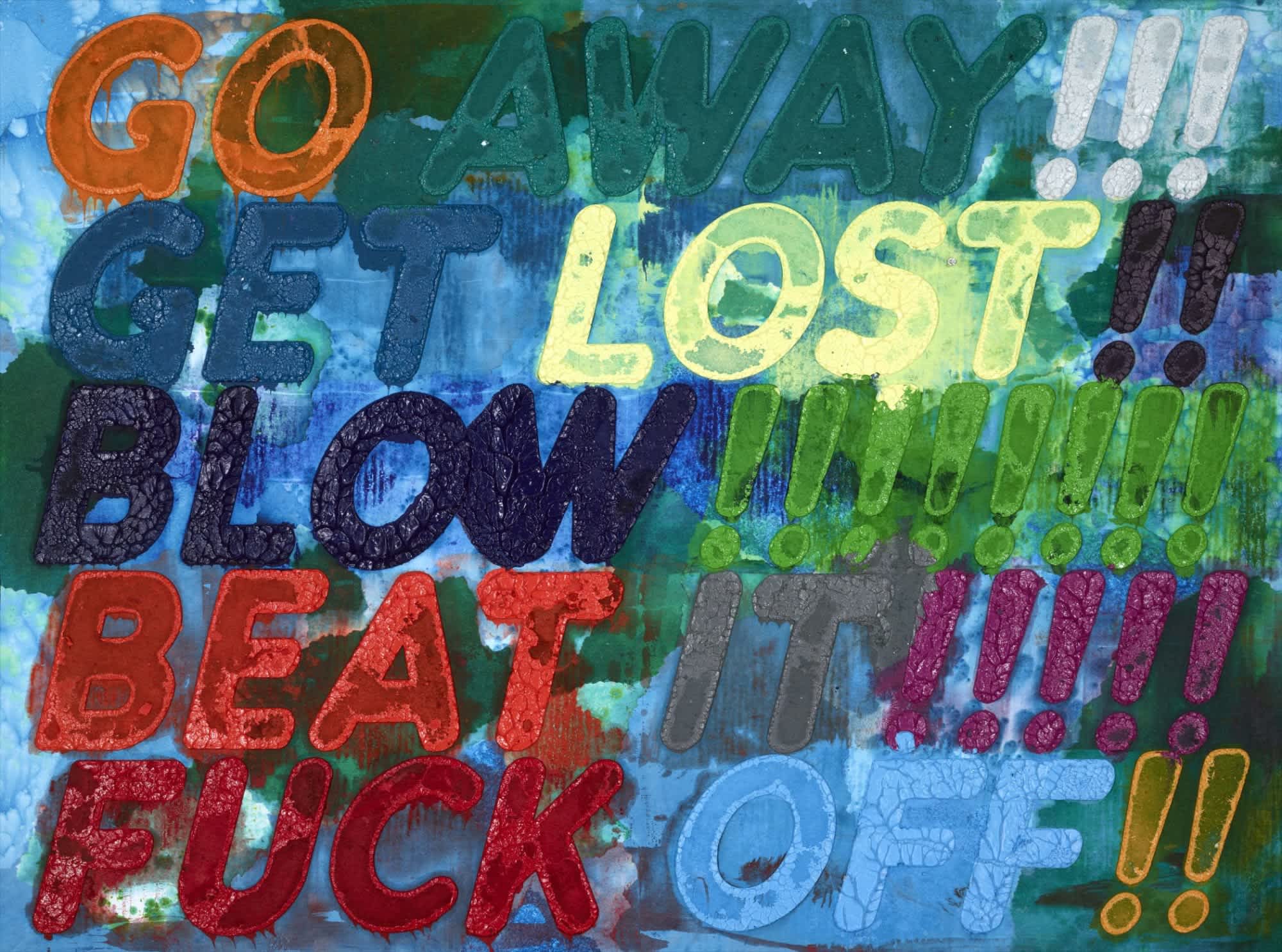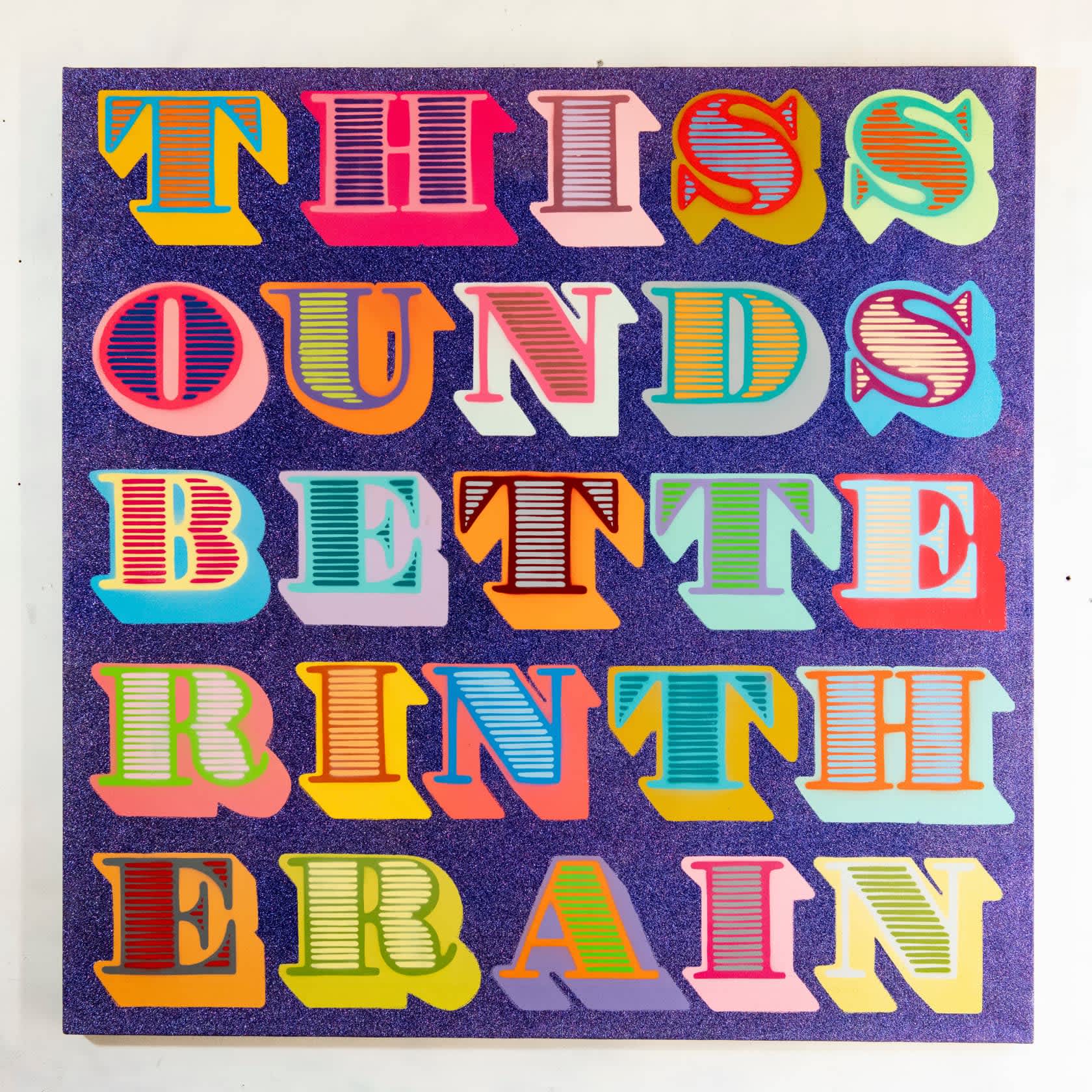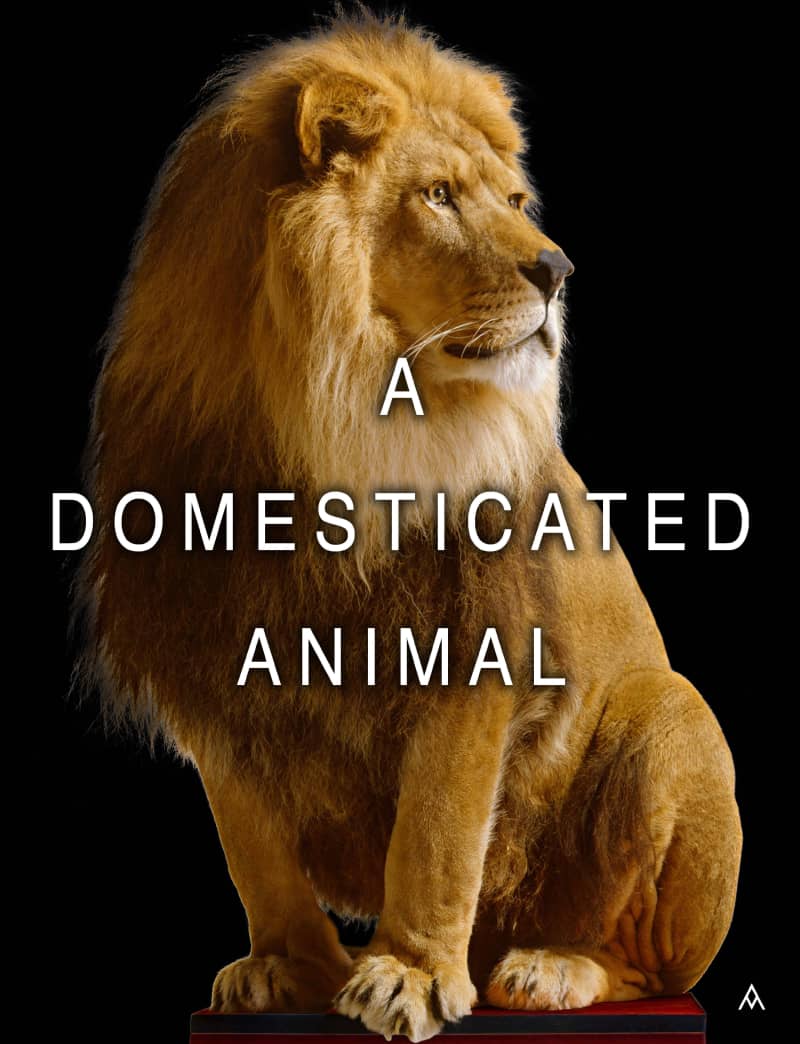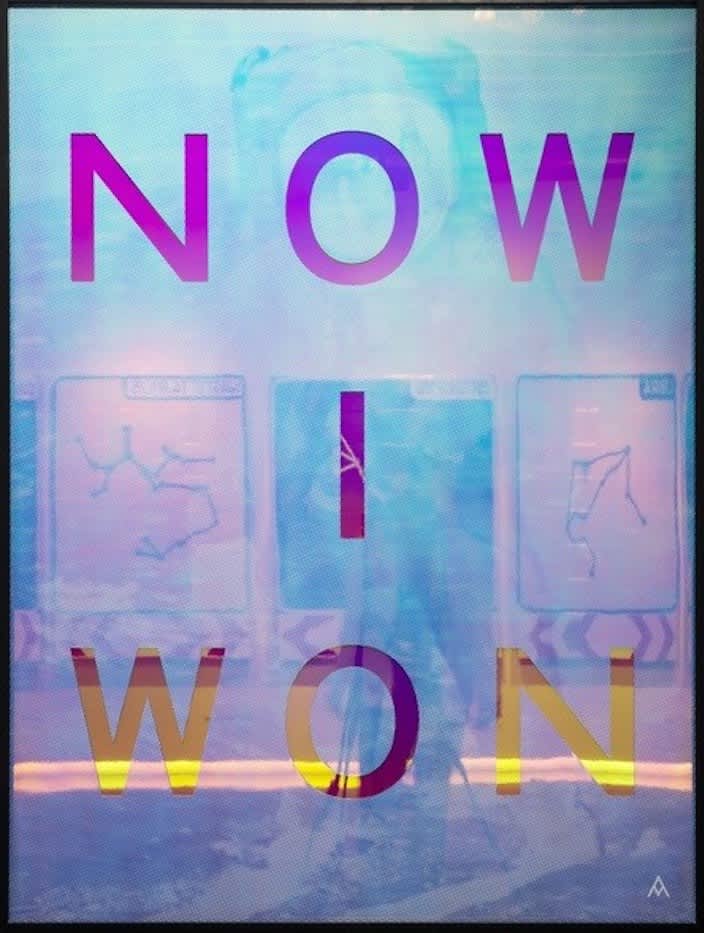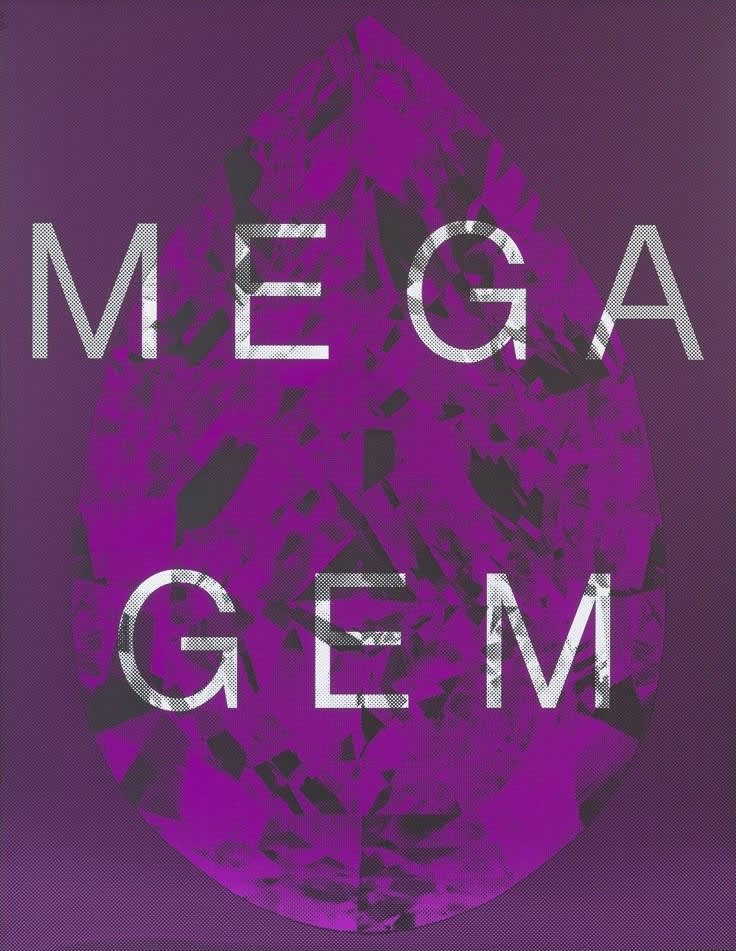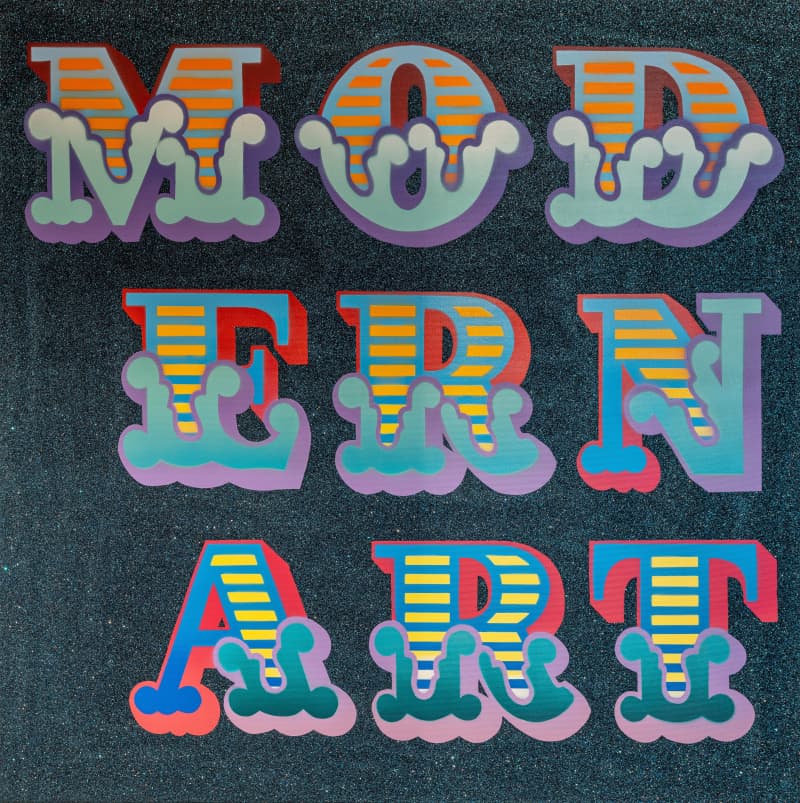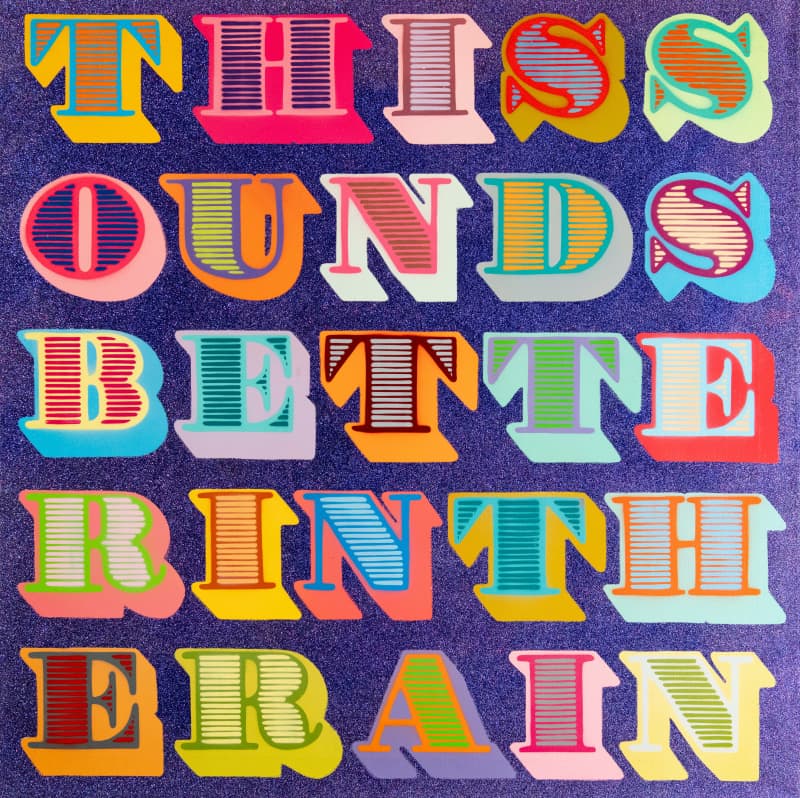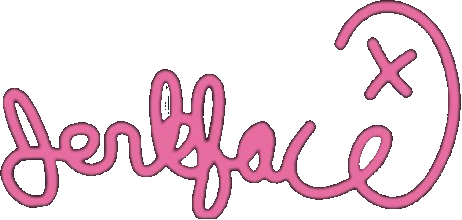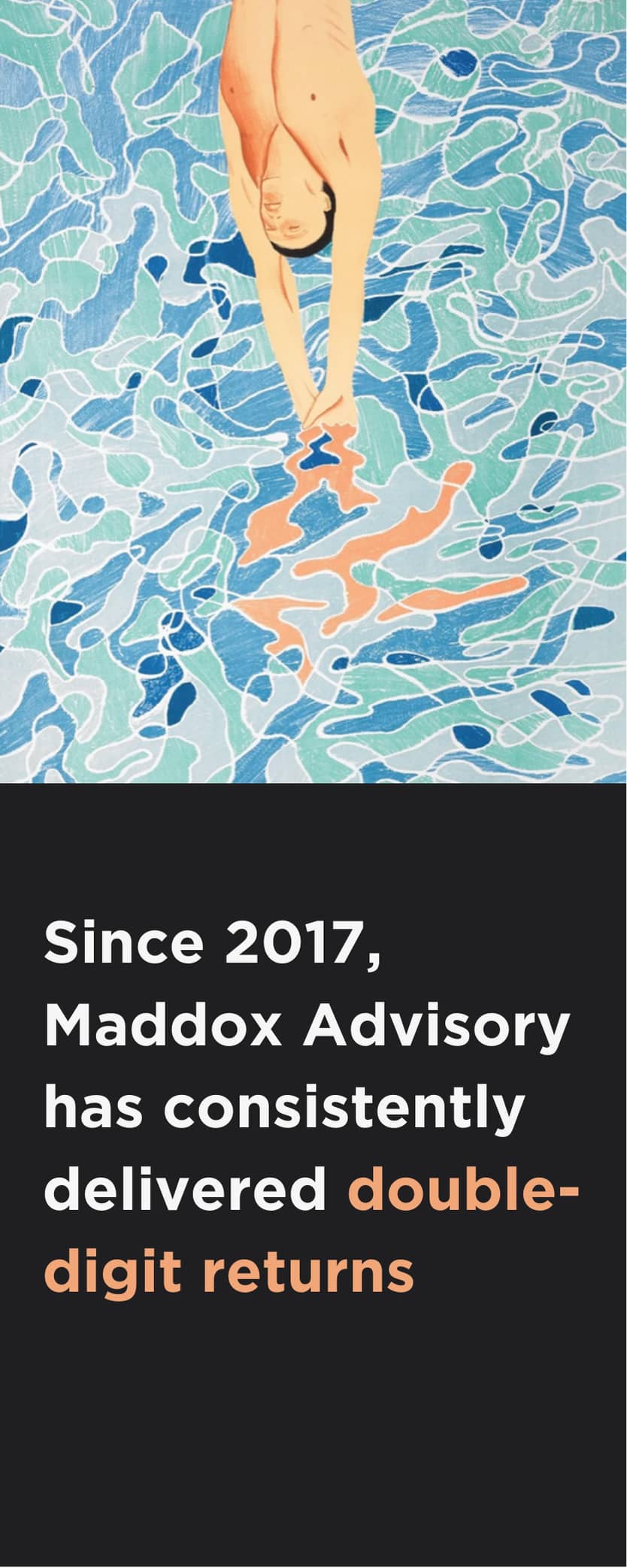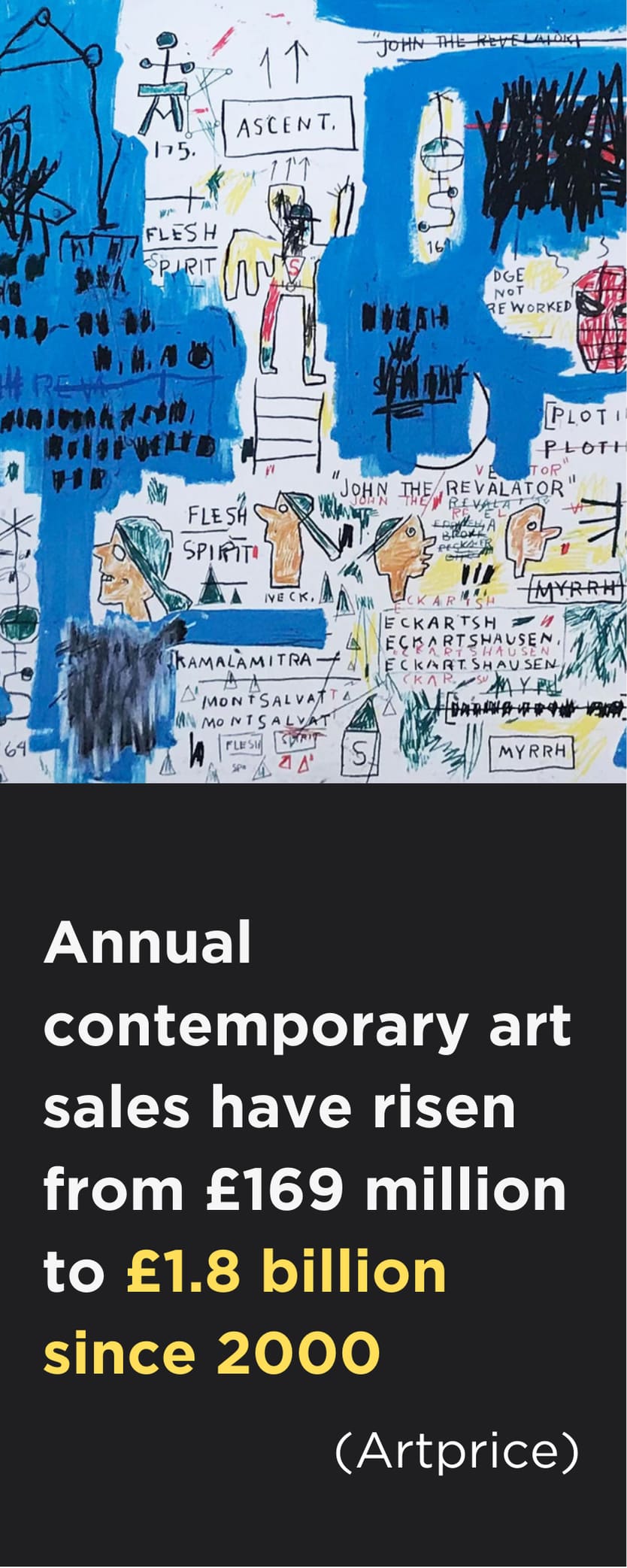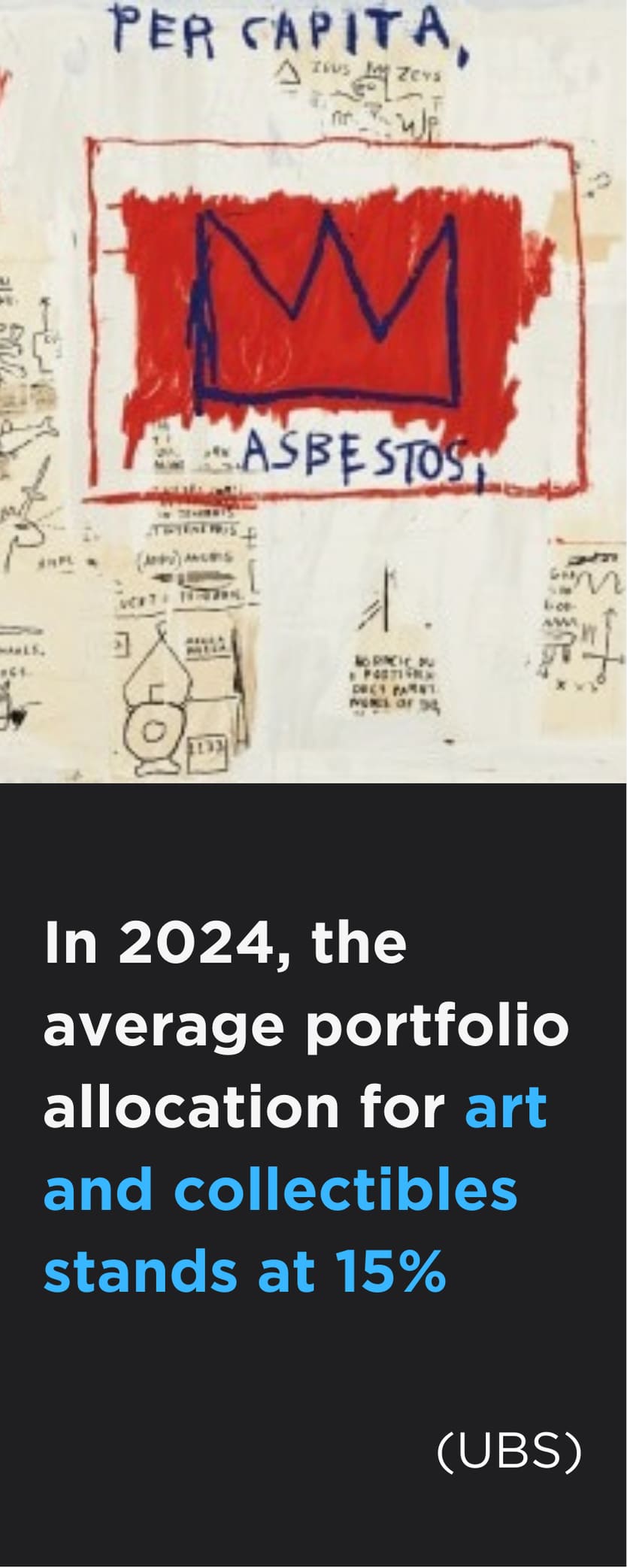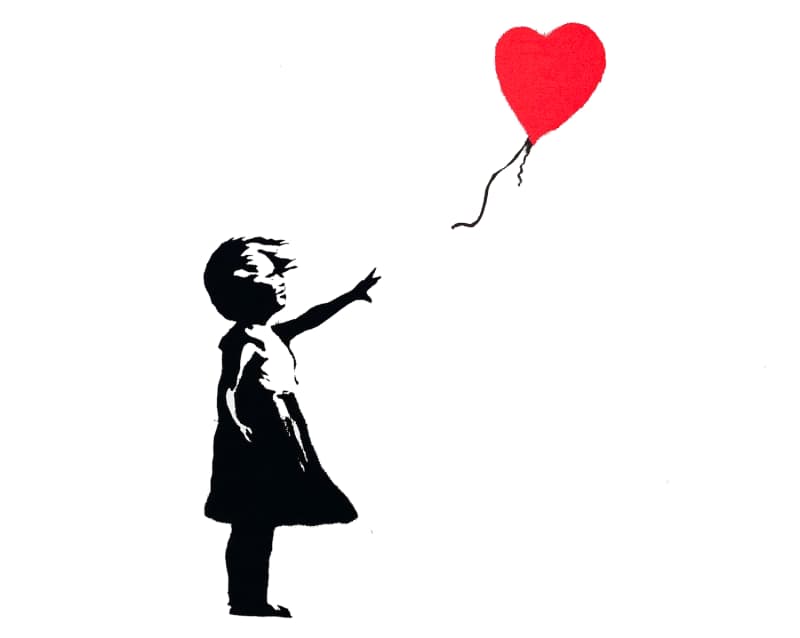From the INRI on the top of so many Renaissance crucifixes to Magritte's "Ceci n'est pas une pipe", words have often played their part in painting. Here, though, are five artists for whom the word (or the letter) is the thing.
Massimo Agostinelli
Massimo Agostinelli burst onto the art scene in 2014 with his first, and very verbal, series, Palindromes - which were exactly what he was offering: palindromic phrases carefully paired with already well-known iconic works, placing the words on top of the image and creating what he calls a 'symbiotic connection'. Take for example, MADAM IN EDEN IM ADAM, which he superimposed on Rubens' Adam & Eve. Language ever his forte, he's continued to work with both text and imagery, regularly layering words over images, as in his follow-up 2015 series, Anagrams: here, he plays on the names of pop culture icons, using lenticular printing to transform the words as the viewer moves around the room.
Massimo Agostinelli, Heart / Earth, 2017
And so ELVIS becomes LIVES, and CLINT EASTWOOD turns into OLD WEST ACTION. His most recent exhibition was SIGNS, held in London in 2019, in which the works were a kind of hybrid of star signs and road signs, with Pisces, for example, written instead as P15C35, much like on a number plate. Witty, undoubtedly, and so too are his interventions, of which he's staged four. In 2017 he installed a trashcan at Art Basel, upon which he had inscribed the words 'la plus belle' - the direct translation of which is 'the most beautiful'; Equally, it's a pun on the French for bin: 'poubelle.' And in 2019 he went even bigger at another art-world favourite when he dropped a 100 tonne block of ice at Frieze, amusingly and thought-provokingly called FREEZE, thus drawing attention to the ongoing climate crisis.
Ed Ruscha
'If you isolate a word for just a moment and repeat it ten, fifteen times, you can easily drive the meaning from the word and from the sound of the word,' says Ruscha. Which prompts the question: how exactly are we meant to interpret the American artist's large body of work? Work that ranges from his thousands of single word images - words such as 'honk', 'gas' or indeed 'radio', as featured in his 1964 piece HURTING THE WORD RADIO #2, which sold for $52.4 million in 2019 - to the lengthier phrases he employed later in his career - take, for example, DID ANYONE SAY "DREAMBOAT"? (1975).
Well, according to the American artist, "a lot of times the words are unimportant, their definitions are unimportant. They become almost abstract objects.... I've never been able to look at my work as though the words I use can be used for anything more than what I've done with them." The way he made them changed over time: the earlier examples tended to use a generic typeface, rendered in white and evenly spaced; while the later work made use of maple syrup, crushed baked beans and caviar.
Christopher Wool
'If you can't take a joke you can get the fuck out my house,' declares one of Christopher Wool's pieces from 1992. The price it sold for at Christie's in 2014 is no laughing matter, though: it pulled $23,685,000, while his 1990 work UNTITLED (RIOT) was bought for close to $30 million in auction at Sotheby's in 2015 - his most expensive work to date. Wool's work is simple in design, yet tricky in the reading.
Christopher Wool, Hypocrite (Page From Black Book), 1989
For Wool removes standard spacing, punctuation and, at times, vowels, stencilling black letters onto white aluminium panels to create both words and phrases, and using simple, everyday rollers to apply further effects to the panel. Rumour has it he was inspired by having seen the words 'luv' and 'sex' spray painted in black on a delivery truck - a mundane feat of observation he's deployed to such effect that his fan base has remained fascinated ever since he emerged onto the New York art scene in the eighties.
Mel Bochner
Bochner's Thesaurus pieces are perhaps his most celebrated artworks, and they do what it says on the tin - they consist of synonyms of the same word painted upon a canvas. Take, for example, his 2006 Obscene, in which the American artist painted the words lewd, randy, hardcore, hot'n'horny… the list goes on and on. As it does with his piece - where you'll find phrases like 'Right on!, You better believe it?, Now you're talking!, And so on and so on. It's all the same and yet different and his method makes the viewer think about his or her own choice of words.
For as Bochner famously painted in 1970, 'Language is not Transparent'. It's a thought he obviously believes deeply, because he has since painted the phrase many times, in a multitude of languages and sizes. Most recently, it's appeared on the cover of Document magazine's Spring/Summer 2020 issue as a response to the COVID-19 pandemic: for this, he has written the phrase in 15 different languages and imposed each rendering on top of the other, so that the work is indecipherable, and forms a comment upon the current disharmony of the world. One thing, though, that is transparent is the amount his works can sell for: his most expensive piece Blah, Blah, Blah (2012) sold in 2016 for $137,500.
Ben Eine
Ben Eine first came to notice when he painted his bright and beautiful letters all over East End shutters - so some may think of him as a graffiti writer. It's a term he would dispute. The Briton is, he says, 'a street artist' and that's different: 'street artists,' he says, 'want to add something to the environment. They consider the audience, whereas graffiti writers don't care about anyone except themselves, they do it purely for kicks.' And though he clearly gets great pleasure from his 'letterform' art, so too does his audience - and have been doing so for some 25 years, ever since he first tagged his distinct typographic style across London. So joyful are his bold letters that not only has the local council let them remain in situ, but there is also now an area in East London named 'Alphabet City', thanks to his works.
Ben Eine, This Sounds Better In The Rain, 2013
It's not just letters and vibrant cheer that the artist spreads; he also conjures up phrases that cause viewers to pause and think about society - which Londoner wouldn't instantly recognise his Peace is Possible mural on Ebor Street, done in a response to rising knife crime. Or indeed his cheerfully coloured, yet deeply impactful mural, Home Sweet Home Less on Great Eastern Street. His fame reaches far beyond the English capital, though. David Cameron gave Barack Obama Eine's Twenty-first Century City in 2010, and Los Angeles' Museum of Modern Art is one of many galleries worldwide that holds his work in their permanent collections. And his work now sells for tens of thousands.

